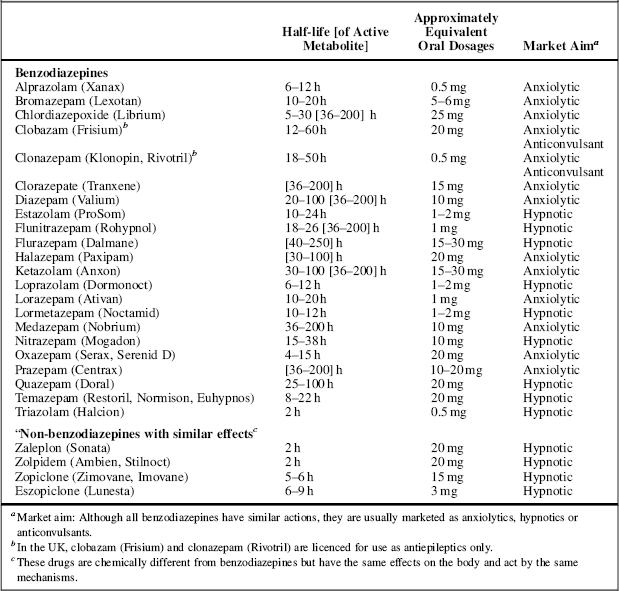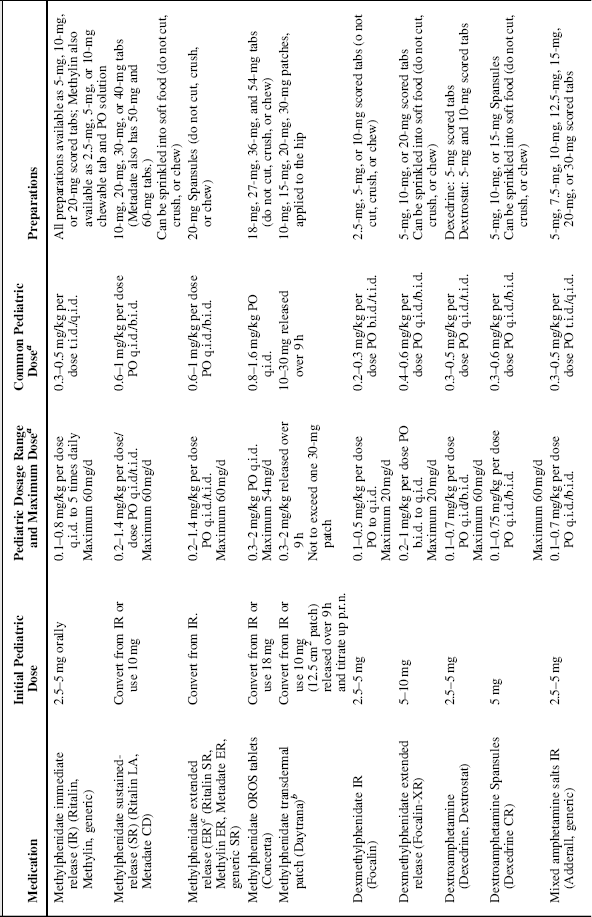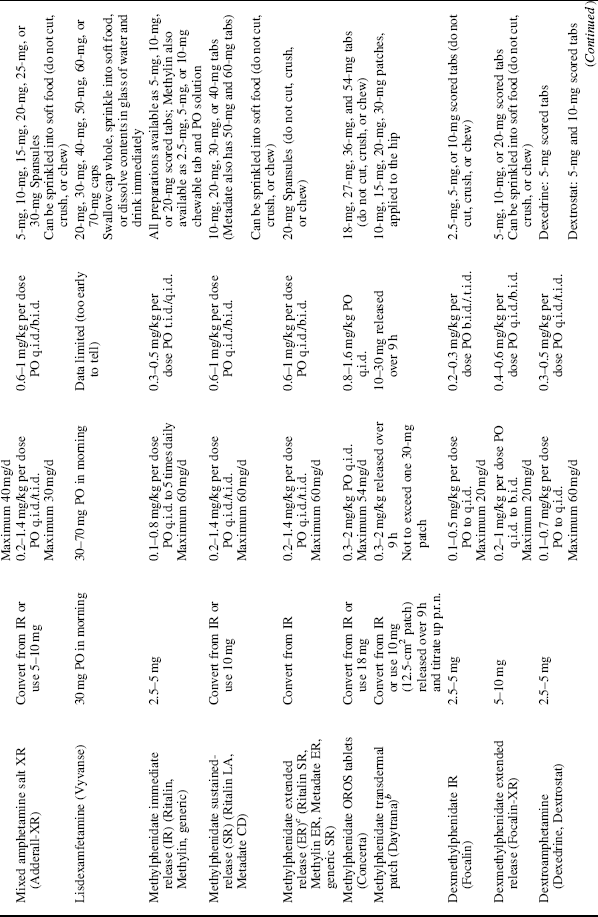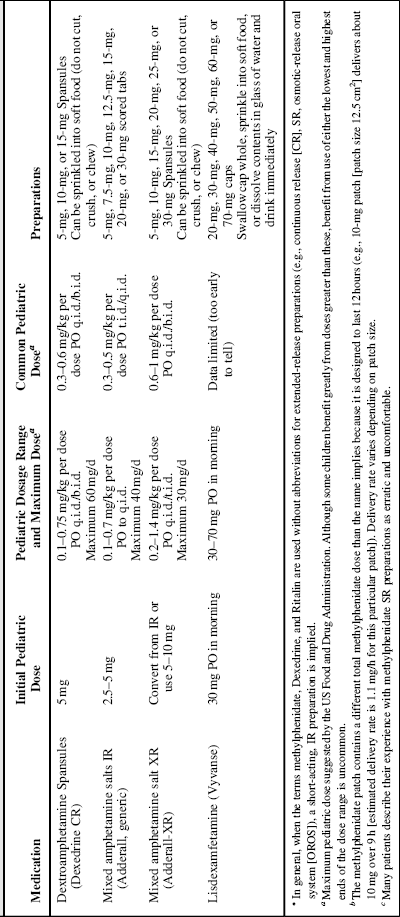36.1 Anxiolytics
36.1.1 Introduction
The major advancement in the field of anxiolytics in the 1960s was the development and approval of benzodiazepines. These agents were much safer than what had been used until then, had a rapid onset of action (so patients felt better quickly), and had a broad spectrum of efficacy extending from situational anxiety to pathologic anxiety disorders. Many different benzodiazepines, with different absorption times and half-lives, were developed and have been valuable not only for treating anxiety and anxiety disorders but for treating seizure disorders and alcohol withdrawal.
36.1.2 Uses of Anxiolytics
Anxiolytic or antianxiety medications are used to treat generalized anxiety disorder and may provide relief for acute anxiety states, social phobia, performance anxiety, and simple phobias. They are used also for short-term relief of insomnia. Anxiolytic medications include the antidepressants, the azopyrones, the benzodiazepines, and beta-blockers. There is research currently being conducted on the use of the antiepileptic medications for the treatment of anxiety as well.
36.1.3 Benzodiazepines
The benzodiazepines as a class work by increasing the relative efficiency of the gamma-aminobutyric acid (GABA) receptor when stimulated by GABA. The benzadiazepines as a group have different affinities for GABA receptors; in fact some agents bind to only one of the two types of GABA receptor.
The pharmacologic effects of the benzodiazepines include anxiolysis, sedation, centrally mediated muscle relaxation, and elevation of the seizure threshold. Benzodiazepines are safe and effective, and their adverse side-effects are extensions of their central actions. They may be excessively sedating. Concurrent use with narcotics or alcohol can potentiate the effects of benzodiazepines. In addition to these effects benzodiazepines can stimulate a mild paradoxical excitatory reaction at the beginning of treatment. Table 36.1 provides a current list of benzodiazepines.
Table 36.1 Benzodiazepines.

As a class, benzadiazepines are efficacious for the treatment of PD, SAD, GAD, alcohol withdrawal, and situational anxiety. Although OCD falls within the taxonomy of anxiety disorders, benzodiazepines do not seem to be particularly effective in treating these patients.
Benzodiazepines have the potential to lose their efficacy. Patients may begin increasing their dose to achieve the previous response and this may lead to dependence problems.
Benzodiazepines should be used cautiously with older adults, debilitated patients, depressed or suicidal clients, and those with a history of substance abuse. Withdrawal syndrome is possible on discontinuation of the medication and is most common with high dosesused for more than 4 months. Withdrawal symptoms include anxiety, irritability, tremulousness, sweating, lethargy, diarrhea, insomnia, depression, abdominal and muscle cramps, vomiting, and, at its most severe, convulsions. Benzodiazepines should be discontinued gradually with careful monitoring of symptoms during the process. Onset of symptoms related to withdrawal or discontinuation generally reflects the half-life of the medication (1–2 days for short-acting drugs and 2–5 days for longer-acting drugs). Withdrawal symptoms, however, have been known to occur as late as 7–10 days after discontinuation. Symptoms generally peak several days after onset and disappear slowly over 1–3 weeks. Patients must be cautioned not to abruptly discontinue taking these medications.
36.1.4 Buspirone
Buspirone is a member of the group of agents called azaspirodecanediones. It is believed to exert its anxiolytic effect by acting as a partial agonist at the 5-HT1A autoreceptor. Stimulation of the 5-HT1A autoreceptor causes a decreased release of serotonin into the synaptic cleft. It usually takes approximately 4 weeks for the benefit of buspirone therapy to be noticed in patients with GAD. It has not been found to be effective in other anxiety disorders. One major advantage of buspirone is that it does not cross-react with benzodiazepines. The most common side-effects associated with buspirone include dizziness, gastrointestinal distress, headache, numbness, and tingling. Buspirone is contraindicated in patients with marked renal or liver impairment and in lactating women.
Buspirone generally is administered orally in tablet form. Adults usually begin with 15 mg/day in three divided doses. Increases of 5 mg/day are made every 2–3 days, with the maximum dose not to exceed 60 mg daily.
36.1.5 Beta-blockers
Beta-adrenergic blockers competitively antagonize norepinephrine and epinephrine at the beta-adrenergic receptor. It is thought that the majority of positive effects of beta-blockers are due to their peripheral actions. Beta-blockers can decrease many of the peripheral manifestations of anxiety such as tachycardia, diaphoresis, trembling, and blushing. The advent of more selective beta-blockers that block only the beta2-adrenergic receptor has been beneficial since blockade of beta1-adrenergic receptors can be associated with bronchospasm. Beta-blockers may be useful for individuals who have situational anxiety or performance anxiety. They generally have not been effective in treating anxiety disorders such as generalized SAD, PD, or OCD.
36.2.1 Introduction
Psychostimulants are a class of drugs commonly used to treat disruptive behavior disorders, most often attention-deficit hyperactivity disorder. Amphetamines and methylphenidate (MPH), and magnesium pemoline (PEM), are two groups of stimulants that received US Food and Drug Administration approval for ADHD treatment in the pediatric population. They are available in both branded and generic formulations, as well as in long- and short-duration (immediate-release) preparations (Table 36.2).
Table 36.2 Psychostimulants∗



Stay updated, free articles. Join our Telegram channel

Full access? Get Clinical Tree




